- Home
- Piers Anthony
Spider Legs Page 6
Spider Legs Read online
Page 6
A monstrous spider? He would have laughed it off as tabloid fakery, had he not seen that woman's head. There had to be a connection.
Elmo shifted uneasily, then ran to the phone and called the police station and Nathan Smallwood. He left the hospital minutes later, thanks largely to his natural dislike of hospitals, disinfectants, corridors, and laboratories. Now at least he had a pretext.
CHAPTER 10
Call
THE PHONE RANG. Nathan picked it up. “Yes?”
“Dr. Smallwood.” The voice was pleasantly familiar. “This is Officer Sheppard.”
The lady policeman he had met at the meeting. “Hi, what can I do for you?” He pictured her holding the phone handset close to her windblown, sunny face. She might be wearing a cotton twill shirtdress in burnished gold, and she could have on just enough lipstick to show that her mouth was perfect. His image of her was wickedly familiar, but there were no penalties for hidden thoughts.
“I was wondering if you'd like to go for a walk downtown and discuss this sea spider problem?”
“Police business?” As if it could be anything else, in real life.
“No, personal. The whole spider incident is giving me the creeps. I also love smart men with mustaches.” In his fancy she exuded a refreshingly ingenious warmth.
“Sounds good.” Nathan chuckled. It seemed a long, long time since a woman called him on the phone and showed interest. Of course it was his knowledge of sea life she was really interested in, nothing else. Still. . .
Nathan had been born with a harelip, and although it had been surgically corrected, he thought the mustache enhanced his looks. Before Natalie called, Nathan was spending his Saturday in his cozy motel room by the sea trying to watch the New York Giants on TV as he read the local newspaper. As he spoke on the phone, he put down Newfoundland's weekly newspaper, The Dispatch, where there was a small article on mysterious deaths near the coast. The article was surrounded by a fuzzy border and below the printed matter was a drawing of a giant tarantula attacking boats. Natalie said something. Nathan listened as he fished breakfast cereal out of the box and rapidly munched the flakes.
“Where shall we meet?” he asked.
“How about we go for a walk along Main Street by the coast. Do you know where Martha's Fish Store is?”
“Yes. I'll be there.” Nathan shut the football halftime show off on his TV.
“OK; see you at 7:00?”
“Sounds good.” As he hung up, he marveled at this development. People met all the time to discuss business, but Natalie was perhaps the one he had most wanted to see again—and she had called him. Who said miracles didn't happen?
CHAPTER 11
Research
THE WORDS “CANTERBURY Crossing” were carved in a decorative wooden sign that hung outside by the street, floodlit from the front and backed by pine trees. Natalie Sheppard was reclining on the sofa in her attractive garden-apartment in the Canterbury complex, holding the telephone with one hand and eating a piece of raw broccoli with the other while she sat and watched The People's Court on the TV. A 110-gallon freshwater fish tank stood against a wall of the living room. The tank contained only a single species of fish: the tiger barb. About seventy of these two-inch-long fish swam in schools back and forth, forth and back. With their red-brown bodies fading to silver on the underside and their four distinctive black strips, they formed a moving wall of color, a magic aura of living stripes and fins.
She hung up the phone. Had she just done something foolish? She had met Nathan Smallwood only the one time, but rather liked what she had seen, and she had the impression that the feeling was mutual. His first glance at her—his pupils had dilated in seeming appreciation. Did she fit some physical image he liked? No matter; she found that she liked being liked, for whatever reason. So she had found a pretext to see him again, hoping that she wouldn't strike him as forward. It was probably an idle fancy that would soon fade, but why not play it out? Her social life here on the island was not exactly rollicking.
Meanwhile, on the horror front, things were hardly dull. A giant deadly spider ripping people apart? A creature with several brains? She definitely needed to know more.
Natalie had heard of pycnogonids, but only vaguely, so she canceled her chess class, slipped on a hip-hugging jacket in green napa leather, left her condo, and went to the local library to find out more. All around the library were trees of varied species, ages, and colors. A sparse stand of autumn-stripped maples and birches pushed their branches to the blue sky. To her left was a grove of scarecrow trees, gnarled and black, with an occasional leaf as an epitaph to warmer days of the summer. Ancient Indian laurels flanked the canted parking lot and lent a note of grace to the old building.
Some men with shovels were digging some of the soil in a nearby field. As Natalie parked her car and walked along the black slate stones to the library's entrance, she noticed the library was having its annual book fair. A local band was playing. An elderly man wearing a gray jacket approached her.
“Would you like to enter a raffle for this homemade quilt?” the man inquired as he pointed to a huge colorful quilt hanging on a wooden frame. “Only costs a dollar to enter.”
“Sure,” Natalie said. She didn't mind supporting the local library. The man handed her a piece of paper which read:
BENEFIT: JOHN C. HART MEMORIAL LIBRARY
WIN A HANDMADE QUILT
DRAWING: NOVEMBER (WINNER NEED NOT BE PRESENT)
DONATION: $1.00 EACH OR 6 FOR $5.00
PAY AND MAIL TO: HART LIBRARY, 1130 MAIN STREET
TWILLINGATE, NEWFOUNDLAND
Oh. It wasn't precisely local. Twillingate was a generous two hundred miles to the north by road. But their library needed support too, and the raffle was valid regardless. She'd do it.
“What's the digging all about?” Natalie said to the man.
“Do you remember the story of the German scientist who discovered the fossil tooth of a giant ape—was it at an Eskimo pharmacy where fossils were ground up for traditional medicines?”
“Yes. But that was in 1935.” Since then, scientists had sporadically looked for the remains of prehistoric, giant apes that weighed 2,000 pounds and loomed 11 feet tall. Natalie thought it was a pipe dream, but who could say for sure? She would have said that a sea spider the size of an elephant was a pipe dream too, before today.
“Well, guess what they found in that field by the library?”
“You're kidding?”
“Several jawbones and more than 2,000 teeth were found of the species Gigantopithecus.”
“Wow, any chance they'll find an entire skeleton?”
“Several Newfoundland scientists and a paleoanthropologist from Yale are coming. They think that they'll find the remains of Giganto in nearby caves used to hide military supplies from German bombers. I've heard that some of them think that Giganto lived about three hundred thousand years ago. Ancient humans may have killed them off by hunting them or competing with them for scarce bamboo which the humans used for tools and this ancient ape used for food.”
“Fascinating.” But she found it hard to accept for a new reason: the climate would have had to be a lot warmer here in those days for bamboo to grow. That was possible, of course, but she would have to see more solid evidence before believing it. Natalie looked at her watch. “Got to go.”
The library was fairly crowded as a result of the book fair. Natalie reached for the black and white door and noticed a few wasps hovering nearby. She stooped down to avoid them, entered the library, and approached a librarian who smiled back at her.
“Hi, I'm looking for biology books,” Natalie said. One of the wasps had followed her inside and quickly headed for a window, which unfortunately was closed. She watched the wasp for a few seconds.
“Anything in particular?”
“Invertebrates. Sea spiders.”
The librarian raised one of her eyebrows, then smiled, and said, “Come this way.”
Natali
e gazed out the library's rear windows, past the wasp that continued to dive bomb the thick pane of glass. Outside the window were motor yachts and sailboats bobbing up and down in the water alongside the harbor docks. Most of their sails were furled, their engines quiet. The library was one of her favorite hangouts, with its hardwood floors, antique Persian carpets and cream walls. It was like no library she had ever been in before, and she was happy that a good chunk of the township's taxes went to it. She didn't care if she didn't win that quilt raffle; it was for an excellent cause.
She returned her attention to the pile of books and journals at her table. Her hand moved to a nearby Tiffany lamp with its hand-blown tulip shades, and moved it closer to her reading area. She lost herself in the joy and frustration of spot research, following up several false leads for every true one.
As Nathan Smallwood had indicated at their meeting, pycnogonids lived during the Jurassic Period, about a hundred fifty million years ago. Natalie pictured monstrous sea spiders carrying on and cavorting with a tribe of brontosauruses, now called apatosauruses. No, that wouldn't work; the thunder lizards had turned out to be upland walkers, not water waders, so wouldn't have encountered the sea spiders.
Deep water species of the sea spider could be huge although tropical shallow water species could be as small as an ant. The pycnogonid's digestive and reproductive system had many branches that penetrated deeply into the creature's many legs. Most species had eight legs but some with ten or more legs were not uncommon in Antarctic regions.
The librarian came up from behind her. “I found something else,” she said to Natalie, and handed her Lockwood's Biology of the Invertebrates and a computer printout.
Tap, tap, tap, went the wasp on the glass.
“Thanks.”
The scariest part of the creature was its proboscis, or sucking appendage, which was longer than the rest of the creature's body. The mouth looked like a triangle at the end of the long trunk of the proboscis. Natalie found very few pictures of the adult creature, but she did find several diagrams of the baby larval forms which looked nothing like the adult.
Natalie heard some high-pitched voices and looked up. Some nursery school children were leaving a room with an adult volunteer. They had just finished listening to the children's story Ants Can't Dance.
“How did you like it, Terrie?” one mother asked.
A beautiful little girl wearing a sweater with a golden phoenix on it replied, “Great. Can ants dance?” The girl shook her blond pony-tail with excitement.
Natalie smiled and thought that maybe someday she would get married and have a little Terrie running around her condo. Someday. She tried to return to her reading. Unfortunately the overhead bright fluorescent lights were just turned on and the white Formica surfaces of her table were a little hard on her
eyes, like looking into an icy arctic lake shimmering under a bright winter sun. The room was getting chillier—perhaps the librarian had reduced the heat because it was near closing time.
Tap. Tap. Tap. She really ought to get a cup and catch that wasp and take it outside.
As she read, some of the gorgeous Chinese bowls and vases that decorated the library shelves were being stored in locked cabinets for the night by a member of the custodial staff. It was almost time for her to go meet Nathan. She gazed down at her book on the table, and tried to wrap up her reading.
In some species of pycnogonid the young larvae invaded the interior of jellyfish where they lived parasitically until they emerged as sea spiders. The larval stages of Nymphonella tapetis, a Japanese species, lived parasitically inside the cavity of clams. But these were small spiders; what about the big ones? Surely an elephant-sized creature couldn't live in a clam, not even in larval stage.
Natalie continued to search for information on the larger species in an effort to find some clues to help them in the present predicament. Unfortunately the life cycle of the huge deep-sea species, especially members of the genus Colossendeis, were unknown.
This lack of knowledge by scientists was not too surprising. There was still much to learn about the marine life off the coast of Newfoundland. The submerged ice structures, the chemical and geological structure of the ocean floor, the extent and affect of pollution . . . Unfortunately, recent dumping of heavy metals and souvenir hunting had caused some depletion of fish and invertebrates off the Newfoundland coast. So not only was much of the story unknown, it might become impossible for it ever to be known, because of inadvertent extinctions.
The wasp at the window had ceased its relentless tapping on the glass and slowly crawled along the base of the window as if defeated. Its stinger undulated. Natalie was beginning to feel a little like the wasp—nervous and tired.
As she finished her reading, Natalie, like most people, was amazed to learn of the vast marine zoo that lived beneath the ice in the Arctic. She had thought it would be a virtual desert. But marine life was plentiful. Her books and magazines showed photos of bright red shrimps filled with parasitic isopods, zebra striped amphipods, bulbous anemones with foot-long tentacles, sea fleas, football-shaped ctenophores, sea snails with iridescent shells, tiny isopods resembling daddy long legs with long, fragile forelegs to walk on silty bottoms and paddle-shaped rear legs to propel them through the water. Some of the most interesting species looked more like plants than animals: Violet holothurians—sea cucumbers—thrust out branching tentacles in search of animal prey.
She shook her head, bemused. There was just so much there, but humans knew so little. It seemed that the northernmost continental shelf of Canada covered almost a million square miles, but scientists had seen less than a few of those miles of this vast maritime estate.
As closing time loomed, Natalie had found what she was looking for in the scientific journals. She photocopied five articles, folded them, and stuck them in her purse. Then she fetched a paper cup, went to the window, and used a sheet of paper to catch the wasp in the cup. She carried it out with her, and freed it outside. The wasp hesitated for a moment on the rim of the cup as if considering how to thank her, then flew away. There was her good deed for the day.
Cheered, she walked to the car.
CHAPTER 12
Pilot
AT THE SAME time Natalie Sheppard was leaving the library, June Holland was piloting a low-flying Hercules HC-130B above a monstrous hook of ice which protruded from an iceberg floating in the sea. In the distance she saw a vast herd of caribou thunder past the shoreline. After a few minutes, she brought the plane lower and cut two of the four engines. 700 feet . . . 600 . . . 500 . . . ever closer to the ceiling of the mammoth iceberg below. Holland radioed that she was descending to 300 feet.
“OK, drop it,” she shouted to her crewman.
On her signal, a young ensign hurled a soft-drink-can-sized jar full of dye down on the ice. “Got it!” he screamed to Holland.
The jar hit silently. Looking back she saw a crimson stain spreading down the canyons of the berg. To June Holland this was just another routine operation by the United States Coast Guard. They were marking the icebergs for rapid identification in studies of their drifting patterns. The dye, a mixture of calcium chloride for penetration and rhodamine-B for the crimson hue, spread a swath of color several yards in diameter across the cliffs of the ice.
Reports of all the icebergs’ positions were radioed to nearby vessels at sea to help prevent collisions. Ice patrols like this dated back to 1912.The United States and 16 other maritime nations shared the cost of the ice patrol. The United Kingdom paid the largest share, but the responsibility for carrying out the assignment rested with the U.S. Coast Guard alone.
“Let's get back,” Holland said. “Our fuel is low.” Her gazed shifted to a small stereo system resting on the short-nap gray carpet of the cockpit's floor where there were stacks of Suzanne Vega and Peter Gabriel CDs, just the right mix of background music for a pilot flying over the sparkling ice landscapes. As she gazed out of her cockpit window at the sea and ice, her eye was c
aught by a motion on the windshield: a tiny brown spider crawled along the bottom of the glass and began to spin a web.
The ensign offered her a cup of hot chocolate, and she gulped down its warming contents. “Thanks,” she said. “Do we have anything to eat?”
“How about a hot dog?”
“OK, slip it into the microwave oven.” The small brown spider stopped for a few seconds and then began to crawl all the way to the top of the cockpit window. It raised its front legs as a thin, shiny web strand poured from the spider's bulbous abdomen. Holland saw that the spider's legs had dozens of fine hairs and that its multiple eyes never winked. It gave her the creeps.
A minute later the ensign returned with a hot dog with the works—relish, onions, mustard, ketchup, and chili. She wolfed it down. The airplane meandered back and forth over the patrol zone. It was now lighter by 4,000 gallons of fuel. The ensign made a final tabulation of iceberg sightings for dispatch by radio to the Coast Guard ships.
Holland was humming to the haunting tunes of Suzanne Vega and thinking about her dinner plans. She hadn't seen any movement outside, but the jerk of the ensign's head and the look of concern on his face was warning enough.
“What's wrong?” Holland said as she turned in her seat and looked out the left window.
“I thought I saw something moving,” the ensign said. His eyes were small pools of light set in a field of dark flesh.
“Where?”
“On the iceberg.”
“An animal?”
“Yes.”
“How big?” She squinted through the smeared windshield.
“The size of a man.”

 Serial
Serial Question Quest
Question Quest Chthon
Chthon Dragon on a Pedestal
Dragon on a Pedestal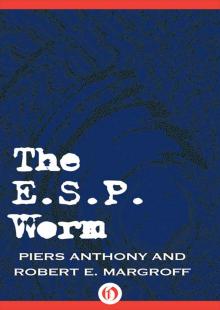 E. S. P. Worm
E. S. P. Worm Hope of Earth
Hope of Earth The Series Boxed Set
The Series Boxed Set Blue Adept
Blue Adept The Sopaths
The Sopaths Beetle Juice
Beetle Juice Awares
Awares Golem in the Gears
Golem in the Gears Geis of the Gargoyle
Geis of the Gargoyle Bamboo Bloodbath and Ninja's Revenge
Bamboo Bloodbath and Ninja's Revenge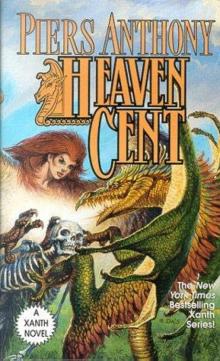 Heaven Cent
Heaven Cent Neq the Sword
Neq the Sword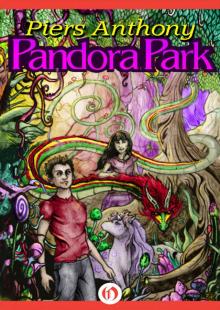 Pandora Park
Pandora Park Juxtaposition
Juxtaposition Bearing an Hourglass
Bearing an Hourglass Dragon Assassin
Dragon Assassin Board Stiff
Board Stiff Virtual Mode
Virtual Mode Castle Roogna
Castle Roogna Aliena Too
Aliena Too Pet Peeve
Pet Peeve The Metal Maiden Collection
The Metal Maiden Collection Volk
Volk Phaze Doubt
Phaze Doubt The Color of Her Panties
The Color of Her Panties Amazon Slaughter and Curse of the Ninja Piers Anthony
Amazon Slaughter and Curse of the Ninja Piers Anthony The Worm Returns
The Worm Returns Zombie Lover
Zombie Lover Xone of Contention
Xone of Contention The Gutbucket Quest
The Gutbucket Quest Split Infinity
Split Infinity Dream a Little Dream: A Tale of Myth and Moonshine
Dream a Little Dream: A Tale of Myth and Moonshine Balook
Balook Out of Phaze
Out of Phaze The Secret of Spring
The Secret of Spring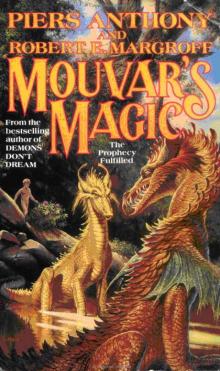 Mouvar's Magic
Mouvar's Magic Cube Route
Cube Route Mercenary
Mercenary Total Recall
Total Recall Man From Mundania
Man From Mundania The Magic Fart
The Magic Fart Letters to Jenny
Letters to Jenny Jack and the Giants
Jack and the Giants Executive
Executive Robot Adept
Robot Adept On A Pale Horse
On A Pale Horse Vale of the Vole
Vale of the Vole Crewel Lye
Crewel Lye For Love of Evil
For Love of Evil Spider Legs
Spider Legs Mute
Mute Being a Green Mother
Being a Green Mother Hair Suite
Hair Suite Air Apparent
Air Apparent Politician
Politician Aliena
Aliena Phthor
Phthor Ghost Writer in the Sky
Ghost Writer in the Sky Pornucopia
Pornucopia Eroma
Eroma Shepherd
Shepherd Kirlian Quest
Kirlian Quest Swell Foop
Swell Foop God of Tarot
God of Tarot If I Pay Thee Not in Gold
If I Pay Thee Not in Gold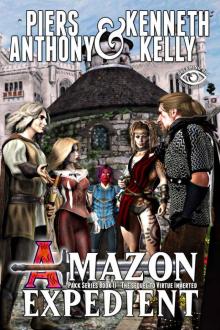 Amazon Expedient
Amazon Expedient Faun & Games
Faun & Games Vision of Tarot
Vision of Tarot Centaur Aisle
Centaur Aisle Serpent's Silver
Serpent's Silver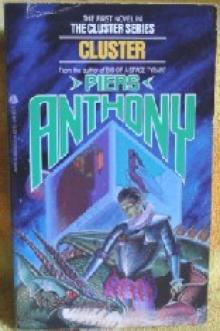 Cluster
Cluster With a Tangled Skein
With a Tangled Skein Chaining the Lady
Chaining the Lady Wielding a Red Sword
Wielding a Red Sword Key to Chroma
Key to Chroma WereWoman
WereWoman Isis Orb
Isis Orb Hair Peace
Hair Peace Two to the Fifth
Two to the Fifth Viscous Circle
Viscous Circle Skeleton Key
Skeleton Key Cautionary Tales
Cautionary Tales The Source of Magic
The Source of Magic Unicorn Point
Unicorn Point Writer's Retweet
Writer's Retweet Demons Don't Dream
Demons Don't Dream Ogre, Ogre
Ogre, Ogre The Iron Maiden
The Iron Maiden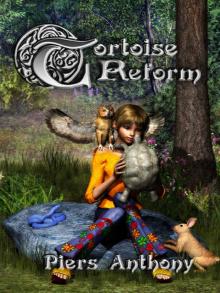 Tortoise Reform
Tortoise Reform Luck of the Draw
Luck of the Draw A Spell for Chameleon
A Spell for Chameleon Yon Ill Wind
Yon Ill Wind Currant Events
Currant Events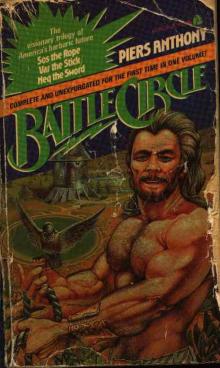 Var the Stick
Var the Stick And Eternity
And Eternity Kiai! & Mistress of Death
Kiai! & Mistress of Death Chimaera's Copper
Chimaera's Copper Refugee
Refugee Isle of View
Isle of View Thousandstar
Thousandstar Mer-Cycle
Mer-Cycle Service Goat
Service Goat Five Portraits
Five Portraits Night Mare
Night Mare Steppe
Steppe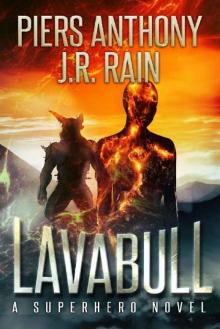 Lavabull
Lavabull Well-Tempered Clavicle
Well-Tempered Clavicle Aladdin Relighted
Aladdin Relighted Aladdin and the Flying Dutchman
Aladdin and the Flying Dutchman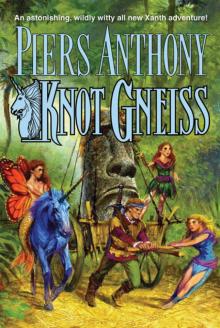 Knot Gneiss
Knot Gneiss Roc and a Hard Place
Roc and a Hard Place Aladdin Sins Bad
Aladdin Sins Bad Flytrap
Flytrap Prostho Plus
Prostho Plus Esrever Doom
Esrever Doom Hair Power
Hair Power The Journey
The Journey Virtue Inverted
Virtue Inverted Of Man and Manta Omnibus
Of Man and Manta Omnibus Trail Mix: Amoeba
Trail Mix: Amoeba Noah's Brick
Noah's Brick Odd Exam
Odd Exam Magenta Salvation
Magenta Salvation Jest Right
Jest Right Fire Sail
Fire Sail Chthon a-1
Chthon a-1 Amoeba
Amoeba Juxtaposition aa-3
Juxtaposition aa-3 Pira
Pira THE CATERPILLARS QUESTION
THE CATERPILLARS QUESTION What Fears Become: An Anthology from The Horror Zine
What Fears Become: An Anthology from The Horror Zine Bio of a Space Tyrant Vol. 3. Politician
Bio of a Space Tyrant Vol. 3. Politician Ogre Ogre x-5
Ogre Ogre x-5 Rings of Ice
Rings of Ice On a Pale Horse ioi-1
On a Pale Horse ioi-1 Luck of the Draw (Xanth)
Luck of the Draw (Xanth) Centaur Aisle x-4
Centaur Aisle x-4 Thousandstar (#4 of the Cluster series)
Thousandstar (#4 of the Cluster series) Gutbucket Quest
Gutbucket Quest Isle of Woman (Geodyssey)
Isle of Woman (Geodyssey) Chaining the Lady c-2
Chaining the Lady c-2 To Be a Woman
To Be a Woman Cluster c-1
Cluster c-1 Battle Circle 2 - Var the Stick
Battle Circle 2 - Var the Stick Mercenary (Bio of a Space Tyrant Book 2)
Mercenary (Bio of a Space Tyrant Book 2) Battle Circle 1 - Sos the Rope
Battle Circle 1 - Sos the Rope Xanth 30 - Stork Naked
Xanth 30 - Stork Naked Secret of Spring
Secret of Spring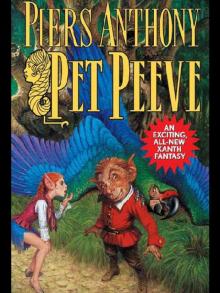 Xanth 29 - Pet Peeve
Xanth 29 - Pet Peeve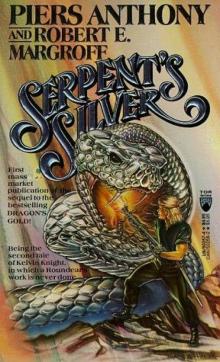 Serpents's Silver
Serpents's Silver Statesman by Piers Anthony
Statesman by Piers Anthony Out of Phaze aa-4
Out of Phaze aa-4 Amazon Slaughter & Curse of the Ninja
Amazon Slaughter & Curse of the Ninja